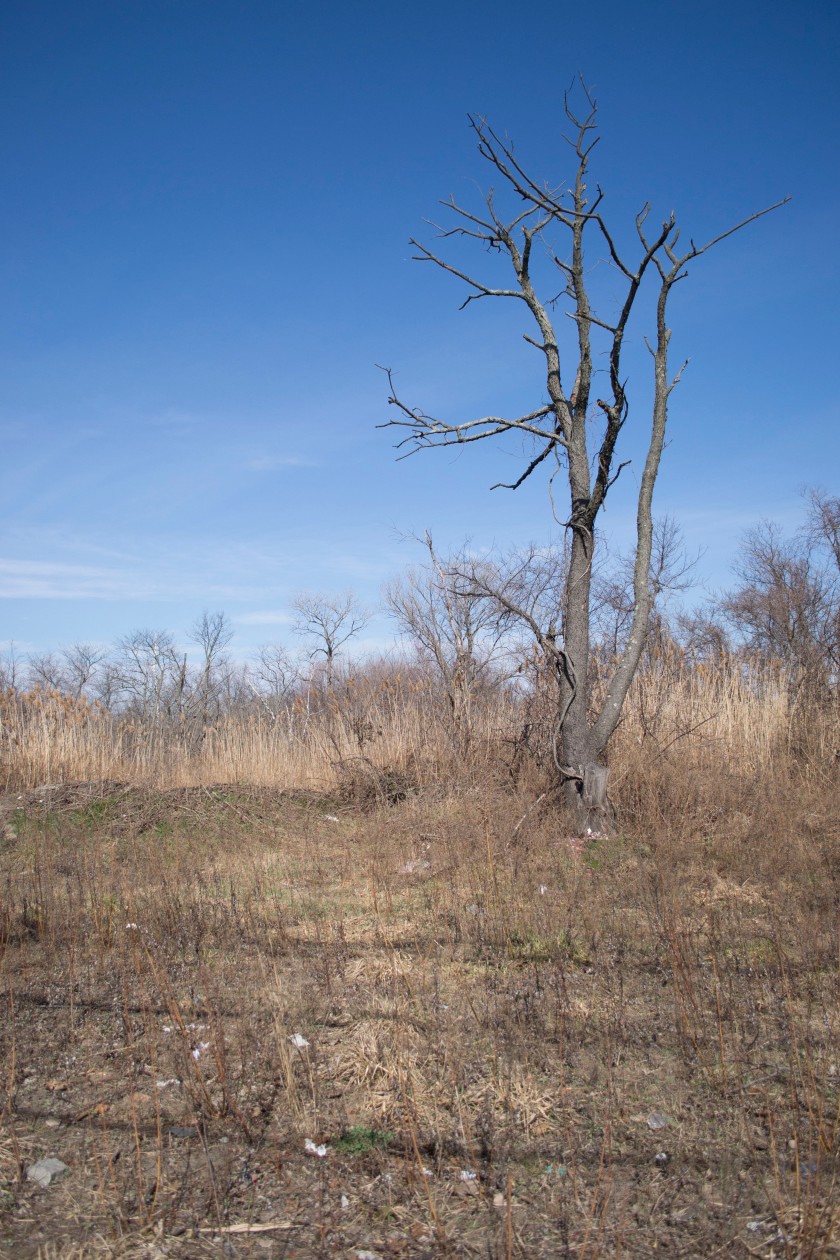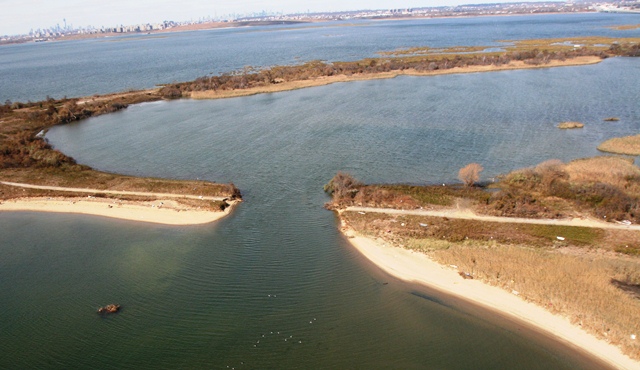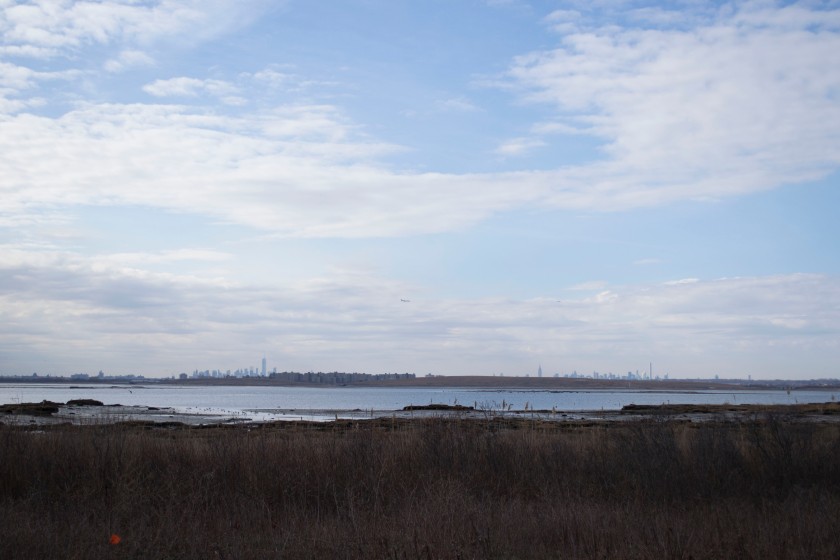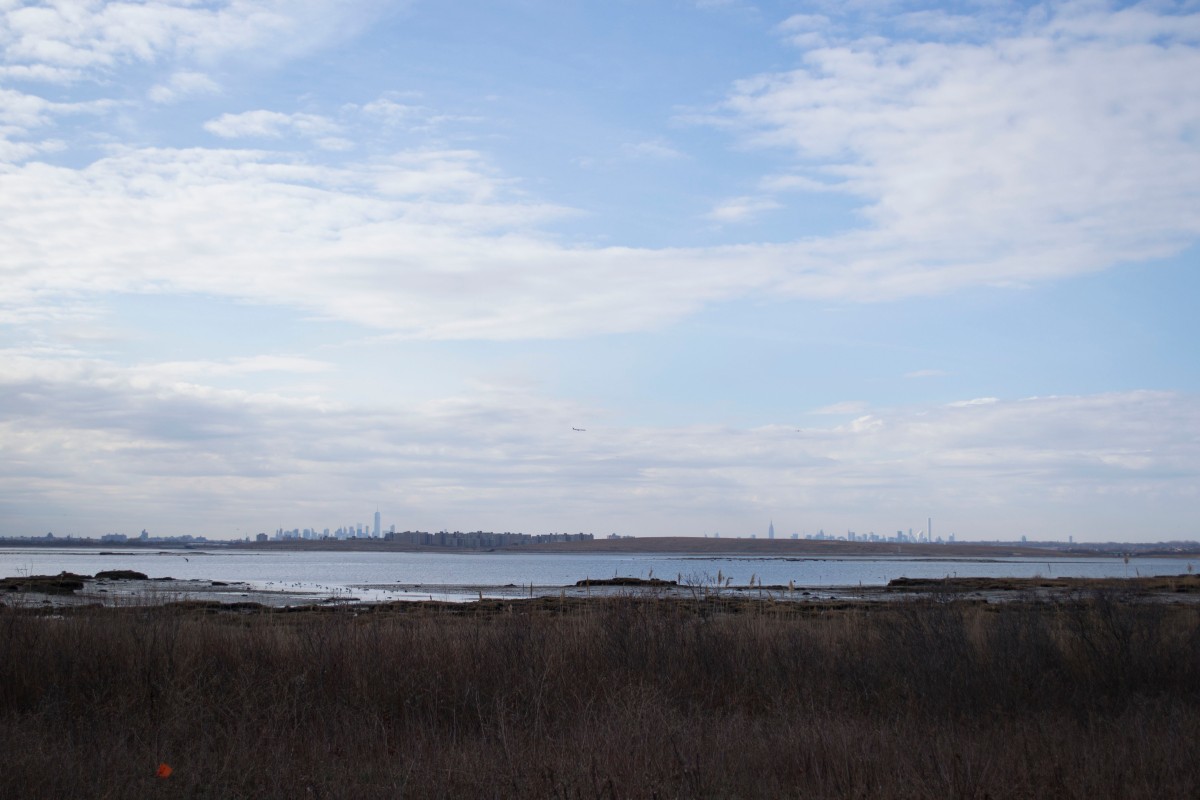The first thing you notice about Jamaica Bay is the trash. It’s everywhere. It’s caught in the trees; it’s on the ground in minuscule pieces so that it almost blends in with the earth. It’s a sad sight to behold and to enjoy the park you have to ignore the litter everywhere.

I arrived at the park first by subway and then a mile-long walk to the park entrance. Without a car, Jamaica Bay Wildlife Refuge, part of the Gateway National Recreation Area, is hard to access, but definitely worth the visit. It is the only wildlife refuge managed by the National Parks Service and is an important birding location. Twenty percent of North American bird species stop at the refugee each year. When I visited, I almost got to see an owl, but it flew away just before I got there.
There are two main trails in the park and I decided to walk the loop around the West Pond. This puts you immediately out on the marsh. It feels completely natural, other than the looming views of the Manhattan skyline. I hadn’t really taken a good look at the park map, so I was surprised when my walk abruptly ended. Hurricane Sandy had breached part of the pond, rendering the trail impassable, and three years later it still hadn’t been fixed.

After a thorough search for information of Jamaica Bay I did find out there is a plan underway to fix the trail, but I also learned something interesting about the pond. The West Pond and its eastern counterpart are both man-made ponds, created under the orders of Robert Moses, a city planner who worked in the New York City area. Plus, not only were these parks man-made, they were also fresh-water ponds. This means that the break is especially bad, because it turned the fresh-water area into a salt-water space. This makes the pond unable to support some of the unique birds that visited the freshwater pond. Hopefully the pond will be repaired soon, but first the NPS must assess the viability of restoring the pond to a freshwater ecosystem or letting it “revert” to saltwater. (Supporters of restoring the pond to freshwater think it doesn’t make sense to let a man-made pond revert to anything.)
The National Park Service said, in a report produced before Hurricane Sandy, that they expect Gateway to be affected by climate change in four main ways: sea level rise, temperature changes, precipitation changes, and extreme weather events. Hurricane Sandy is arguably an example of such an extreme weather event caused by climate change. There have been other effects already occurring in the meantime. The National Parks Conservation Association says that the salt marshes of Jamaica Bay have lost 60% of their area. In 2014 a grant of $11.1 million was provided to the park for many projects including salt marsh, wetlands, and forest restoration, as well as oyster bed enhancements.

The Nature Conservancy is working with the National Parks Service and the Jamaica Bay-Rockaway Parks Conservancy to make the park more resistant to rising sea levels and also to protect it from the changing climate. They plan to weed out invasive species, such as Asiatic bittersweet, and plant new trees and shrubs and species that are flood-resistant and can tolerate and flourish in salty water. They also plan to add in milkweed to attract pollinators. Emily Nobel Maxwell, Director of The Nature Conservancy’s program in NYC hopes that this will serve as an example of what could be done to protect the rest of the City’s coastline.
Though Jamaica Bay has its issues, it’s clear that the National Park Service and proponents of the park are trying to improve and conserve it for future use. When you have the time, you should definitely stop by the park to hike but make sure you read the map before hitting the trails.
Helpful Links:
http://ny.curbed.com/2016/3/17/11248864/jamaica-bay-documentary-film
https://www.nps.gov/gate/learn/nature/gateclimate.htm
http://www.nytimes.com/packages/pdf/nyregion/city_room/20070802_FinalJamaicaBayReport.pdf
http://www.nyc.gov/html/dep/pdf/jamaica_bay/jbwpp_update_10012014.pdf
https://www.nps.gov/gate/learn/news/jamaica-sandy-6.htm
http://www.nycaudubon.org/help-with-our-advocacy-work/jamaica-bay-west-pond-restoration
http://nybirds.org/Articles/Conservation/jba-westpond2014_07.html

